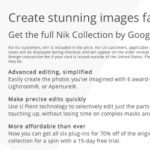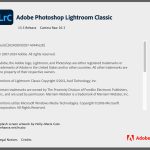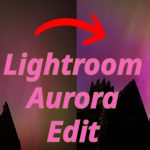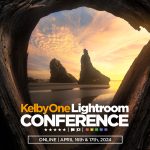
One thing that has always struck me about Craft and Vision books is that they come in priced around that of a magazine. But rather than a series of articles, it was more like a year's column in one book. So you can imagine my surprise when a note popped into my email telling me that Craft and Vision were now producing a magazine simply called ‘Photograph’.
The first issue kicks off with an awe-inspiring and sickeningly beautiful portfolio of Iceland from Bruce Percy. I say that because I was there in June. I did get photos on a par with some of his, but for the most part the light in the photos is well beyond anything I saw! There’s also a richness and a depth that just rings of film. And it should, because in the interview section, Bruce tells us about trying digital for a while and going back to film. After seeing those images, I’d be sorely tempted to increase my film usage!

The 2nd photo story is from Nate Parker, and features sumptuous Black and White images from Acadia and New England. The images are mostly long exposures and high contrast. In short, beautiful. While not referenced as in influence in the interview, there’s a definite Michael Kenna feel to some of the images.
The 3rd photo story is from the venerable Art Wolfe and was shot between Burma and Hokkaido. It’s the first story to feature wildlife and people. Try as I might, I see only John Paul Caponigro’s words from later in the magazine ‘perfectly imperfect’. The composition is beautiful & the decisive moments show Art is a true master of photography.
Craft and Vision founder David duChemin is next, with an excellent article on editing (i.e selecting) photographs. His points are valid and well presented and I’m in agreement. You’ll have to read to find out though!

Just past halfway we meet John Paul Caponigro and a deep look at composition. We’re not talking about guidelines here, we talking more about depth and relationship within an image. There’s a sense of feeling within the article that composition is a lifelong art, not a quick series of rules.
Younes Bounhar does a more technical article on using backlight to create drama and interest in your photography. It’s well written, with solid advice on creating silhouette, controlling flare and hiding the light source.
Next is Brooks Institute lecturer Chris Orwig. I tech edited two books for Chris, and he’s a consummate gentleman with his art on his sleeve. This article is a confessional on photo burnout and overcoming it. It’s a really touching and encouraging read.

Going back to the technical, Andrew S. Gibson takes a detailed look at lens choices and how they affect our photograph in the Featured Article. Using loads of photos to show how various focal lengths can change both the appearance of our subject and their relationship to the background, Andrew drives home how much difference this choice can make.
We’re still not done by a long shot here, either folks! Following Andrew is Kevin Clark with the ‘Studio Sketchbook’. Kevin shows off the use of fluorescent lighting in portraiture using none other than David duChemin as the subject. Kevin give the rundown on what tubes to use and includes no less than three different lighting setups you can put them in.
Piet Van Den Eynde is next with a before/after environmental portrait that takes us through the entire start to finish process in Lightroom. In the tutorial, we’re taken through Lens Corrections, the Basic Panel, Post Crop Vignette, the Brush tool, Grain and even the Graduated Filter. Piet leaves no stone unturned as he gives all the detail on the processes he uses in Lightroom to get the final photo.
Martin Baily, who wrote the book on Print, is up next on the Color Management Myth. Martin takes the reader through reasons to use Color Management and the benefits of a color managed workflow.
Nicole S. Young is up then, with a look at your equipment driving your photography. This ‘Camera Craft’ article looks at how using the 10X filter (the Lee Big Stopper) and a tilt shift lens (the TSE24) helped changed and improve Nicole’s variety and range in photography outside her normal stock photography world.
The penultimate article is the ‘Gear is Good’ section. We’ve dealt a lot with the ‘Vision is Better’ part of the Craft and Vision mantra, so here we have a series of reviews of a variety of useful accessories for the photographer, from tripods to batteries, to triggers and brackets. Al Smith weighs in on each item with good information and background.
The final article is a story on Alaskan Aerial photograpy. It literally reads like a story and is preceded by an aerial photograph that stopped me in my tracks. Simply gorgeous.
The 133 page magazine is a fantastic first effort from the Craft and Vision team. With the authors on their roster, it’s not hard to imagine why the standard of this issue is so high. Another key thing is that this is an ad-free magazine. Bar the token end page promoting Craft and Vision, there isn’t a single ad in the whole thing. Kudos.
The magazine is $8, but subscribers can get 4 issues for the price of 3 (i.e. $24). (Note those are affiliate links, they cost you nothing extra.).








